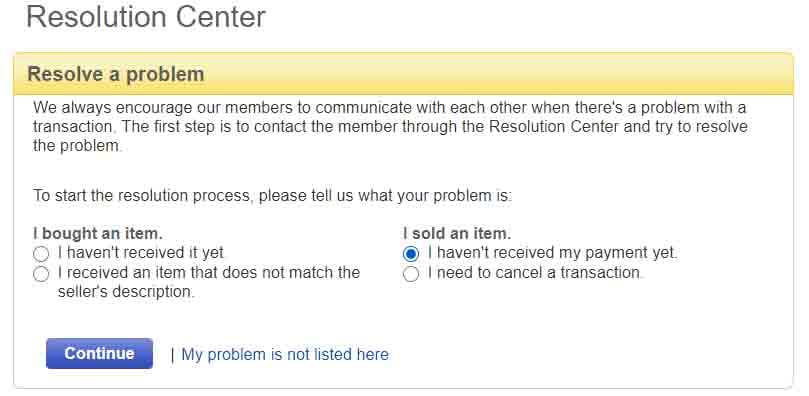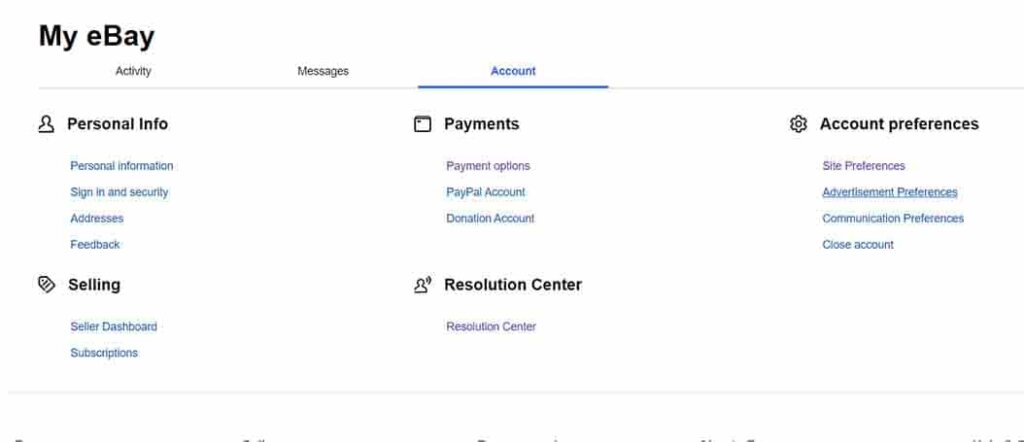When an eBay shopper wins an auction or clicks ‘Buy it now’, they are obliged to pay for that item. Unfortunately, this doesn’t always happen. If you’re dealing with an eBay buyer who hasn’t paid, don’t worry – there are clear steps you can take to resolve the situation.
Dealing with unpaid items costs a seller time and money, by tying up stock, disrupting cash flow and wasting time that could be better spent selling. Fortunately, eBay has procedures in place to help sellers report non-payment on eBay and recover their fees through an unpaid item case.
Here are the steps you need to take to open an eBay unpaid item case and recover your payment when an eBay buyer doesn’t pay.
What to Do If an eBay Buyer Doesn’t Pay
When a buyer doesn’t pay up immediately, don’t assume the worst. It may be the case that they’re unaware they won an auction. Or maybe it just slipped their mind.
For this reason, eBay suggests getting in touch with a buyer before manually opening an unpaid item case.
Provide a positive customer experience by sending a polite reminder that payment is due. Creating a template could save you some time here when dealing with non-payment on eBay.
If you discover the person who purchased an item is no longer registered on eBay, you should open an eBay unpaid item case immediately. Otherwise, you should give the buyer a couple of days to pay their outstanding invoice before asking eBay to follow up on the buyer payment dispute.
What to Know Before Opening an eBay Unpaid Item Case
Beyond chasing payments, an eBay unpaid item case aims to protect sellers from loss of fees and negative feedback.
Some eBay sellers might be reluctant to open one, in case it results in negative feedback from the shopper in question. Others might just think it’s not worth their time. So is filing an eBay report for non-payment worth the effort?
No Payment, No Feedback
Opening a case actually blocks feedback from someone who hasn’t paid for an item.
Cases alert eBay to the situation and, if payment doesn’t come through, feedback from the buyer is automatically removed or blocked in most circumstances.
However, if payment does come through, a shopper may share their experiences. That’s why it’s worth personally reaching out to buyers before opening a case. Being patient and polite might actually lead to positive feedback, which can boost sales, reputation and even your chances of appearing in eBay’s ‘Best Match’ position.
If you do receive negative feedback despite your best efforts, learn how to handle negative feedback on eBay.
You Can Get Your Fees Back
When a sale is finalized, eBay automatically charges your account a Final Value Fee. Launching an eBay unpaid item case enables you to get this back if payment never comes through.
This is the main advantage of opening a case and is particularly important if you’re dealing with high-value items. For most business sellers, the final value fee ranges from 2.5% to 15.3% of the final sale price, plus a per-order fee ($0.30 for orders under $10, $0.40 for orders over $10) as of 2025. These fees increased by up to 0.35%, as of February 14, 2025.
Learn more about understanding eBay seller fees to ensure you’re accounting for all costs.
Be 100% Certain They Haven’t Paid
Falsely opening a case may annoy your customer. But it can also annoy eBay!
If you receive payment and are then reimbursed your Final Value Fee after opening an eBay unpaid item case, this could lead to all your credits for this time period being reversed or disabled.
Repeated instances of false reports can even lead to eBay account suspension. If you’re facing account issues, here’s what to do if your eBay account is suspended.
That’s why you need to double-check an order’s payment status before launching a case.
It’s About Caring for the eBay Community
If you open a case and payment remains outstanding, eBay will mark this on the buyer’s account.
If this account fails to pay for items repeatedly, eBay will eventually limit or remove their buying privileges so they can’t torment any more sellers. This unpaid item fee system helps maintain the integrity of the marketplace.
How to Open an eBay Unpaid Item Case
If you’ve reached out to a customer and still haven’t received payment, it’s time to launch an unpaid items case. Here’s how to do it!
Step 1: Opening a Case
You can open a case 2 to 32 days after a sale. Simply go to the Resolution Center – a link appears at the bottom of most eBay pages. On the main page, select ‘I haven’t received my payment yet’ and then click ‘Continue’.

From there, you just need to sign into your seller account and fill out the order details – if they’re not already there.
Step 2: Wait a Few Days
The moment you open an unpaid item case, eBay will email the buyer requesting payment within four days.
During this time, the customer may contact you asking for more time or another arrangement. Feel free to accommodate their needs, but ensure all outstanding payments are settled within a month of the sale date. You’re not entitled to get your Final Value Fee back once 36 days have passed.
Step 3: Closing the Case
Sellers are also responsible for closing their unpaid items cases. This can be done four days after opening a case, or up to 36 days after the listing ended.
If payment isn’t received and you don’t close the case, your account won’t be credited with the listing’s Final Value Fee. It’s worth noting, however, that payment through electronic methods will cause the case to close automatically.
To close a case manually, sellers need to once again go to the Resolution Center.

Find the case under ‘Your requests and cases’ and click into it. Where it asks ‘Have you received payment’, select yes or no. Once closed, cases can’t be reopened but buyers can appeal the decision.
The eBay Unpaid Item Assistant – An Automatic Alternative
Enabling eBay’s unpaid item assistant will help you save time by automating the process when dealing with an eBay buyer who doesn’t pay.
The eBay unpaid item assistant will automatically open cases on your behalf, and you’ll just receive an email when payments or credits come through. If a case remains unresolved, it will also close the case and relist the item for you. This removes the risk of forgetting to close a case and losing out on credits.
This handy tool is only available to sellers using electronic payments. If you offer the option to pay by check, postal order or outside the eBay checkout, it can’t detect which orders are unpaid and won’t work.
Using tools like eDesk’s eBay integration for efficient selling can further streamline your process for handling customer communications and potential disputes.

Best Practices for Dealing With Unpaid Items on eBay
Knowing how to handle unpaid item cases is essential knowledge for eBay sellers. But they can also take further steps to improve the situation – and even to reduce the chances of non-payment happening at all.
So What’s Next?
When a case is closed without payment, you can try to secure a quick sale by sending out a second chance offer to other item bidders. Alternatively, you can relist the item again and hope you’ll get a great offer for it. In this case, eBay may also credit your account with a refund for the original listing fee.
Preventing Non-Payment
eBay’s business policies give sellers the ability to control their payment methods. If you find that unpaid items are becoming a frequent occurrence, maybe you should only accept immediate payment.
However, this won’t work for sellers accepting ‘Best Offers’ or set up auction-style listings. If you’re one of these sellers, you can set up buyer requirements under the ‘Site preferences’ section of My eBay.
Blocking bids from customers with a record of non-payment can help stop it from happening to you. You can even implement this setting for a single listing if you’re eager to ensure the sale of a particular item.
Where to Start
Unfortunately, unpaid items are part and parcel of being a seller on eBay. However, in the vast majority of cases, this isn’t an issue. When it does crop up, think about how you can mitigate the downsides that come with non-payment while also maintaining a great customer experience.
Taking prompt action when an eBay buyer hasn’t paid is essential. By understanding how to properly open an unpaid item case, you’ll protect yourself from lost fees and ensure that problem buyers are held accountable. With the right approach and tools, you can minimize the impact of unpaid items on your eBay business.






